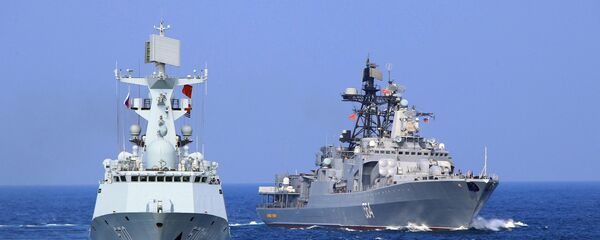Russian military expert Vasiliy Kashin said that the annual Russian-Chinese naval exercises received much greater political resonance than usual.
Joint-Sea 2016 was held against the backdrop of worsening conflict in the South China Sea between China, ASEAN countries, the United States and some of the US allies.
Many political observers, especially in Southeast Asia, began to express fears that Russia intended to intervene in the South China Sea by taking the Chinese side. But according to Kashin, Russia has not taken and does not intend to take any position in regard to the disputes in the South China Sea.
“The proof of that is that the drills took place away from the disputed area. Moreover, Russia maintains active military and military-technical ties with Vietnam, which it wants to retain,” Kashin said.
According to some commentators, the first joint military exercises in the South China Sea have been declared as “symbolic gesture,” devoid of real meaning, such as in the article published on October 15 by the South China Morning Post.
The article suggested that Russia sent its best ship to the drills but China refused to send their newest destroyer 052D which suggests lack of trust between the two countries’ naval forces.
According to Kashin that is not the case because in contrast to the previous drills, the largest and most powerful ship of the Russian Pacific Flee, the missile cruiser Varyag, did not take part in the maneuvers this year because it had been only two months since its return to Vladivostok from a long deployment, including to the waters of Syria.
Russia sent two large project 1155 anti-submarine ships, a project 775 landing ship and two other supporting ships.
The reason for that is that these ships were transferred to the Navy only in 2014, with the following ships in the series arriving at the end of 2015 and 2016. Such new technology is rarely sent to international drills because it is difficult for the crew to become acquainted with it in such a short time span, according to the military expert.
Hence, it is hardly a matter of distrust between China and Russia.
Shortly before the drills, Russian President Vladimir Putin expressed support for China's position in relation to its international arbitration. It should be however, emphasized that the drills were held away from the disputed areas of the South China Sea, off the coast of Guangdong.
In the course of these drills, a tendency of improved compatibility was seen between the two countries’ naval forces. According to Kashin two submarines of PLA Navy were used for practicing various difficult tasks such as anti-submarine defense.
Russian and Chinese sailors and marines engaged in joint training on the defense of anchored ships, search and rescue operations, escort of civilian vessels, and the use of air defense systems.
In addition, the military forces held rocket and artillery fire drills and staged an operation to simulate the liberation of islands captured by the enemy involving the use of paratroops and marines.
Overall, according to Kashin, the drills were an important step in enhancing the capabilities of Russia and China in a joint response to the crises in the world.




